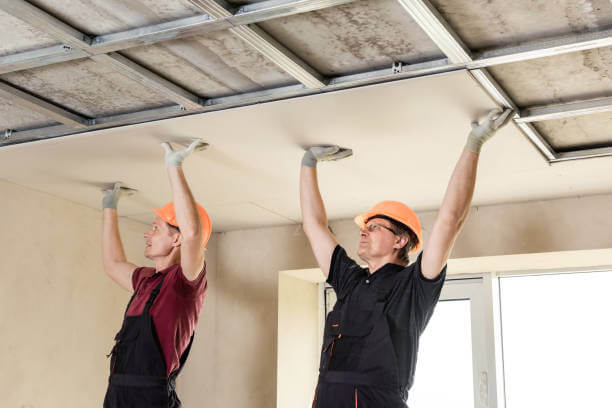Table of Contents
- The Importance of Designing Homes for Multigenerational Families
- Understanding the Role of a General Contractor
- Key Considerations for Child-Friendly Home Designs
- Designing for Accessibility and Comfort for Seniors
- The Benefits of an Open-Concept Living Space
- Incorporating Technology and Smart Home Features
- Environmental and Cost-Effective Strategies in Home Design
- Collaborating with Your General Contractor for a Seamless Experience
The Importance of Designing Homes for Multigenerational Families
As family dynamics continue to shift in modern society, multigenerational living has become a popular and practical choice for many households. With this trend, designing homes that cater to the needs of both young children and older family members is becoming increasingly vital. A house tailored to such diverse requirements not only enhances comfort but also fosters harmony within the family unit. Hiring a general contractor for assistance with these projects ensures that all family members’ needs are expertly addressed. Contractors provide professional insights that transform a basic house structure into a nurturing home environment. By focusing on both functionality and safety, a general contractor ensures a comprehensive approach to family living.
Understanding the Role of a General Contractor
General contractors serve as the backbone of any home design project. Their responsibilities range from overseeing the construction process to liaising with various subcontractors and suppliers. Their knowledge is essential, particularly when creating homes to accommodate the specific requirements of various generations cohabitating. Contractors bring invaluable experience to balancing the aesthetics and practicality of a space. They understand the complexities of creating environments that are both equally appealing and safe for children, while also being accessible for seniors. When embarking on a multigenerational home project, their role is essential for turning architectural plans into a living reality. To ensure you’re choosing the right contractor for the job, it’s essential to ask the right questions. As highlighted in this article from U.S. News & World Report, you can start by inquiring about their experience with similar projects, timelines, and their communication style. These questions help ensure a smooth collaboration and can provide insight into how they’ll manage the various aspects of your home’s design.
Key Considerations for Child-Friendly Home Designs
Designing child-friendly spaces involves far more than just ensuring safety features, although these are indeed of paramount importance. Homes for families with young children should incorporate elements that fuel imagination and learning. This begins with ensuring standard safety features, such as non-slip floors and child-safe locks on cabinets and drawers, but also extends to imaginative play areas. Rooms can be designed with flexible, multifunctional areas that allow children to play, learn, and grow within a safe environment. A thoughtfully designed children’s space fosters a sense of security and encourages developmental progress.
Designing for Accessibility and Comfort for Seniors
When designing spaces for senior family members, considerations must center around accessibility, comfort, and safety. Ensuring easy navigation within the home is key; thus, incorporating features such as wider doorways to accommodate wheelchairs or walkers can be transformative. Fixtures, such as lever-style handles and faucets, are easier for seniors to manage, reducing strain. In bathrooms, adding grab bars and opting for walk-in showers instead of bathtubs can significantly reduce the likelihood of accidents. These considerate designs enable older adults to preserve their autonomy, self-respect, and living standards in their homes.
The Benefits of an Open-Concept Living Space
Open-concept floor plans offer numerous benefits for multigenerational households, providing both social and practical value. By removing physical barriers between common areas, such as the kitchen, dining room, and living room, these layouts facilitate better interaction among family members. Parents or babysitters can easily keep an eye on children from the kitchen while they play in the family room. Similarly, older family members are less likely to feel isolated as they engage in their day-to-day activities within a more cohesive environment. Open-concept spaces are inherently flexible and adapt well to various lifestyle needs, making them ideal for families of all configurations.
Incorporating Technology and Smart Home Features
Innovative technology can significantly enhance the living experience in a multigenerational home. Technologies such as voice-activated assistants, automated lighting, and smart thermostat controls provide convenience and adaptability for all age groups. For families, these technologies offer greater security and energy efficiency while simplifying tasks for children and seniors. Easy-to-use tech increases the home’s efficiency, creating a more streamlined daily routine. Such technologies help bridge the generational gap, as everyone in the household can find features that suit their unique needs.
Environmental and Cost-Effective Strategies in Home Design
Embracing eco-friendly design strategies isn’t merely a fad—it’s a wise and sustainable decision for households seeking to reduce their carbon footprint and energy expenses. Utilizing solar panels to generate power and installing high-efficiency heating and cooling systems reduces dependence on traditional energy sources. Furthermore, selecting sustainable materials, such as bamboo flooring or recycled steel, can help reduce environmental impact. Eco-friendly design is becoming ever more critical, not just ethically but also for future cost savings, as it results in lower utility bills and maintenance expenses.
Collaborating with Your General Contractor for a Seamless Experience
Embarking on the journey to design a home suited for multigenerational living requires open communication and collaboration with your general contractor. From the first consultation to the last walk-through, clear communication is essential. It’s essential to communicate specific family needs, such as accessibility requirements, aesthetic preferences, and budgetary constraints—so that the contractor can provide the best solutions. A strong partnership ensures that the home is functional and matches the envisioned design, making it not just a place to live but a place where the family thrives.

